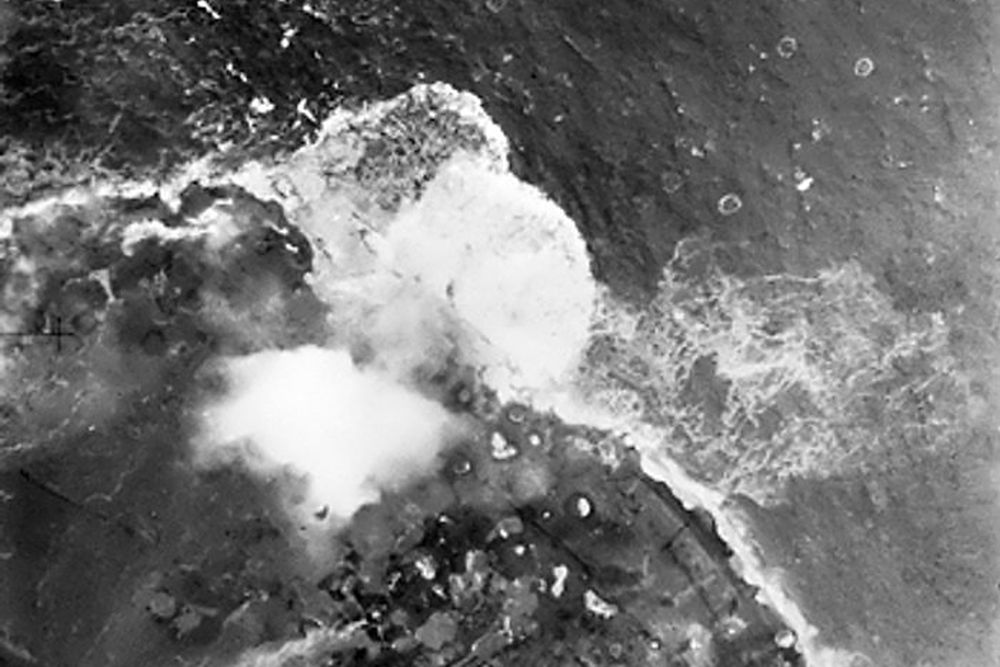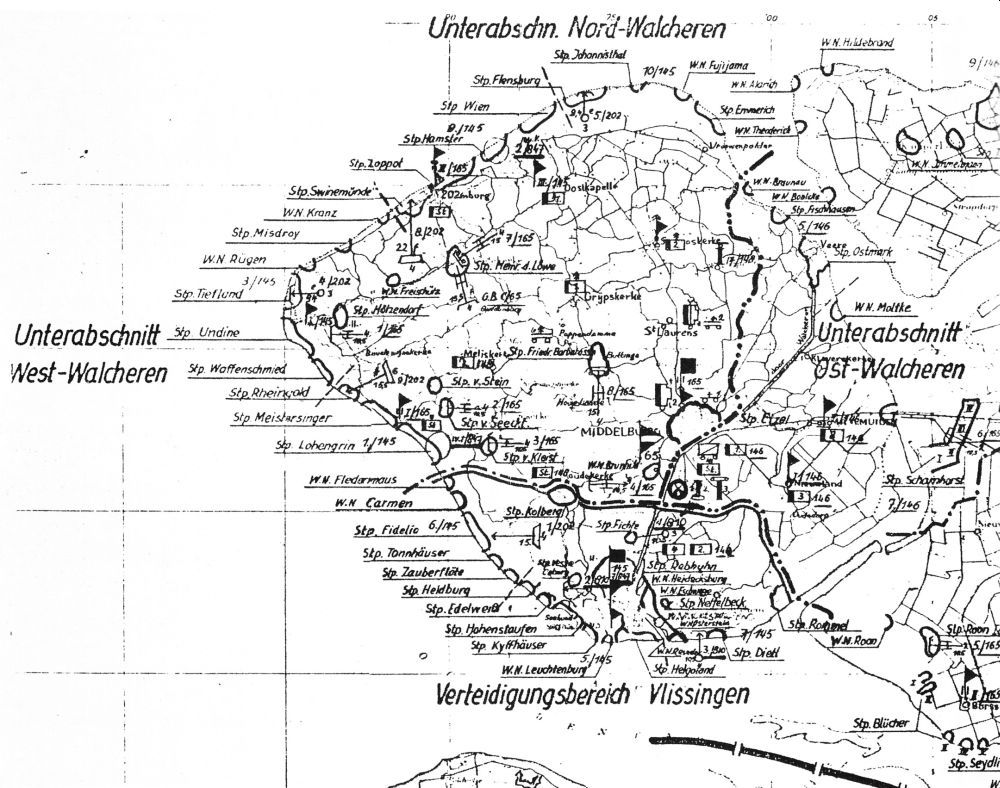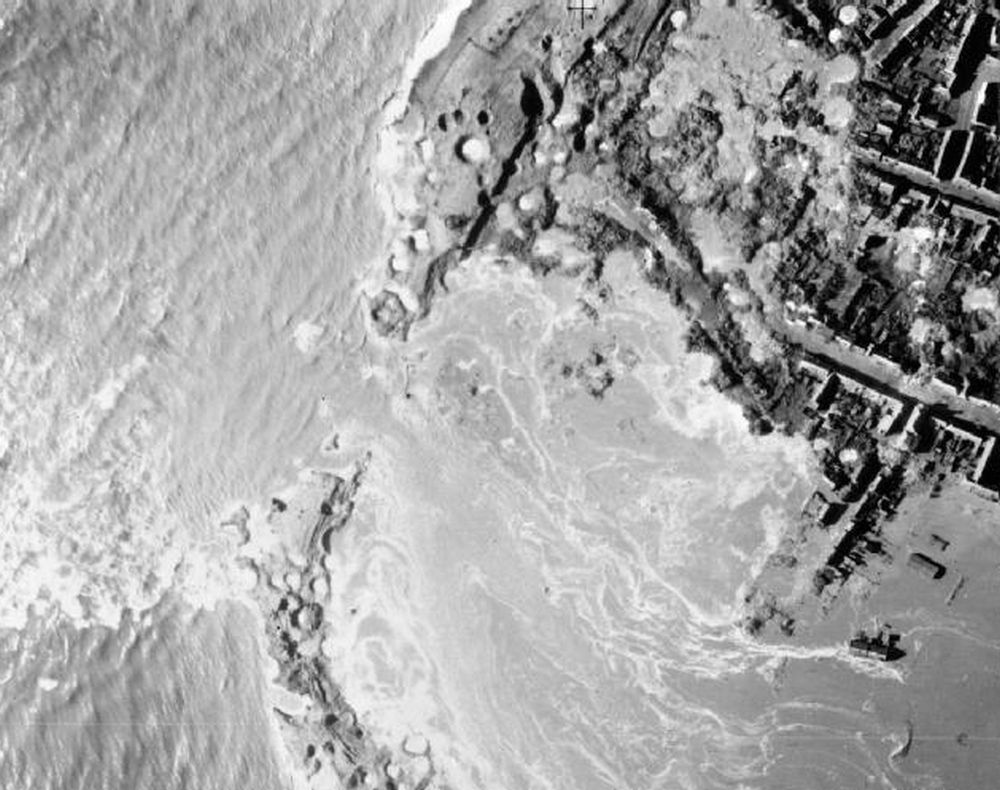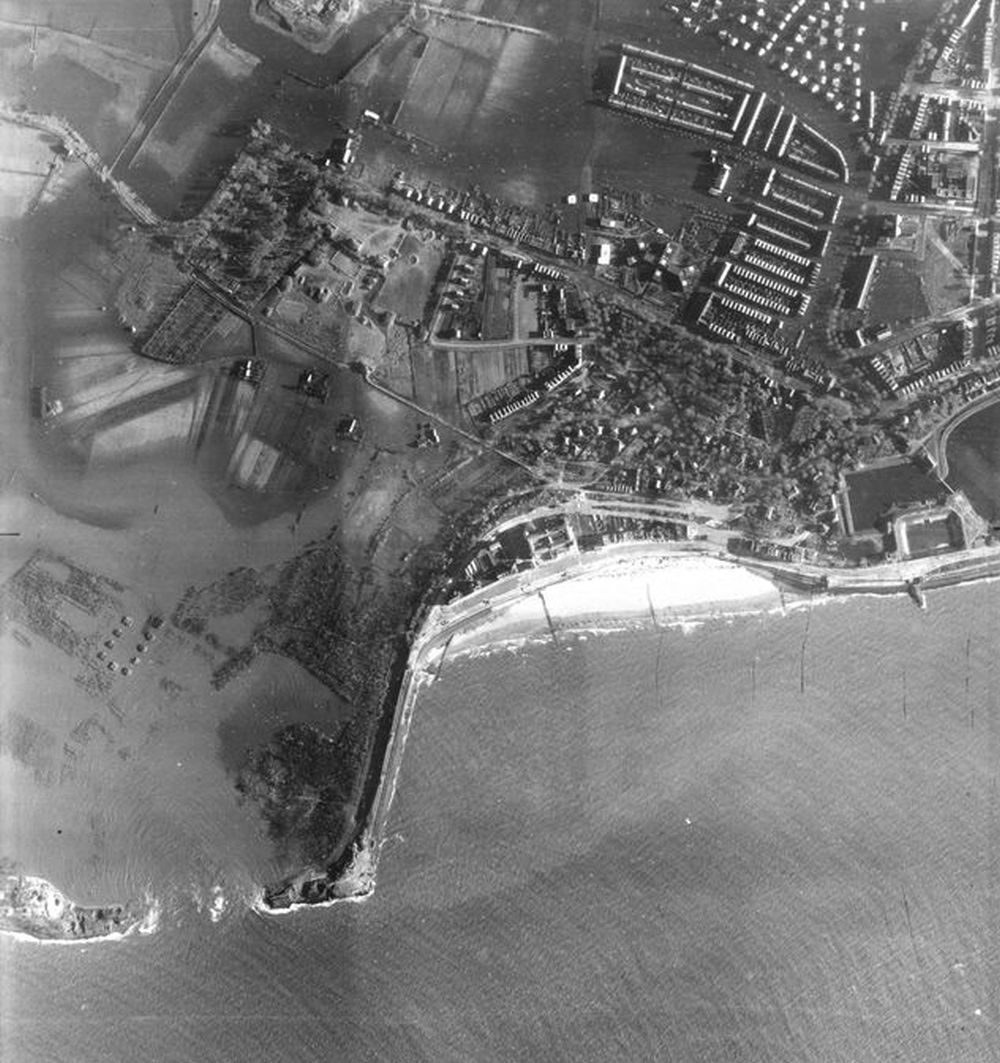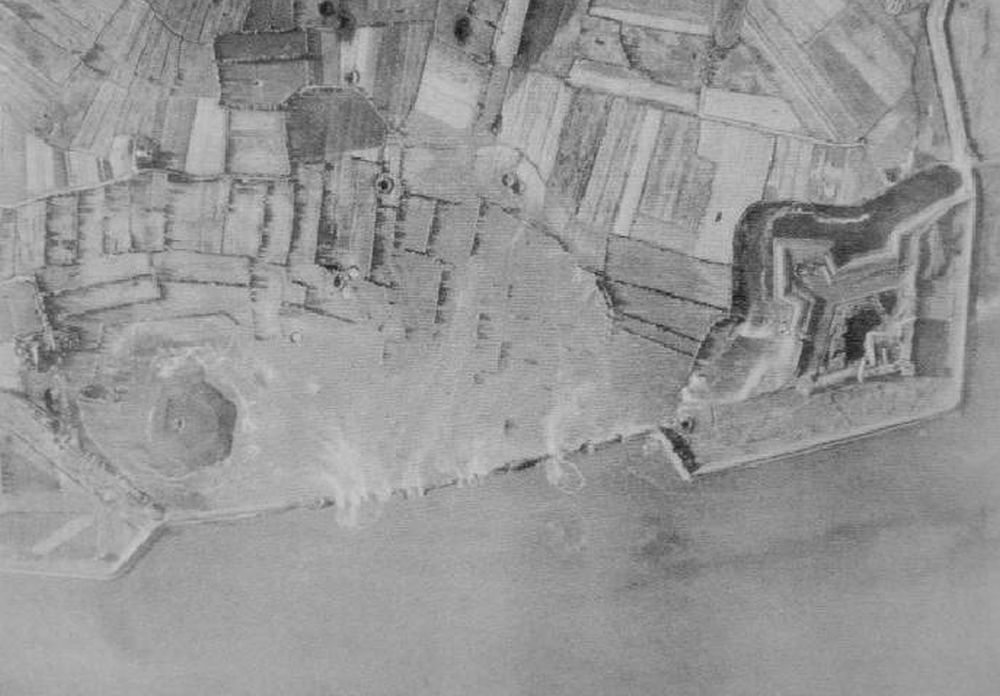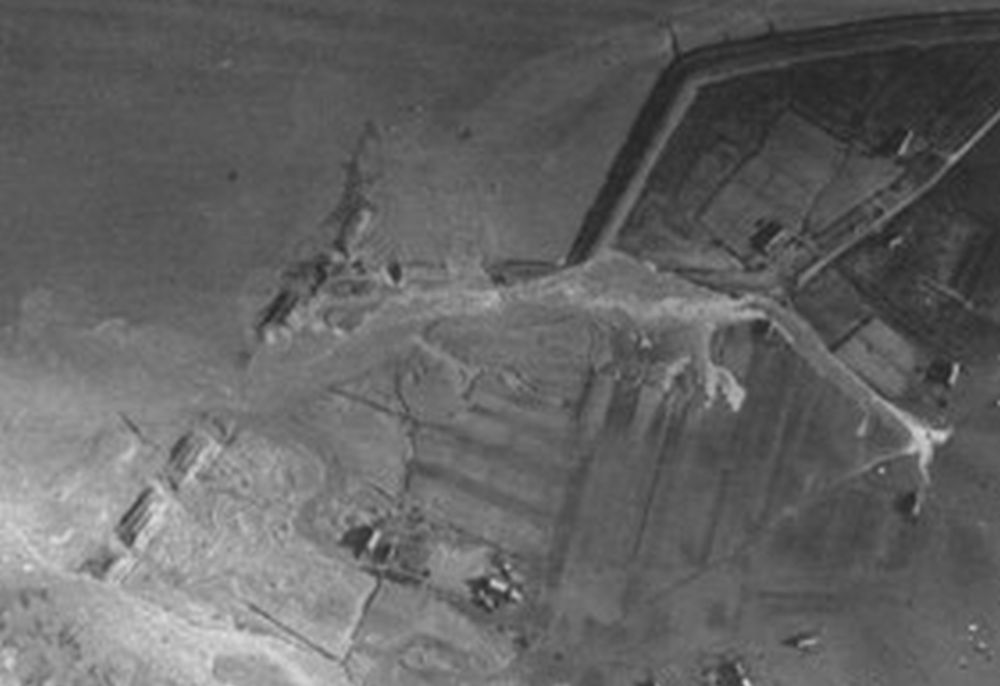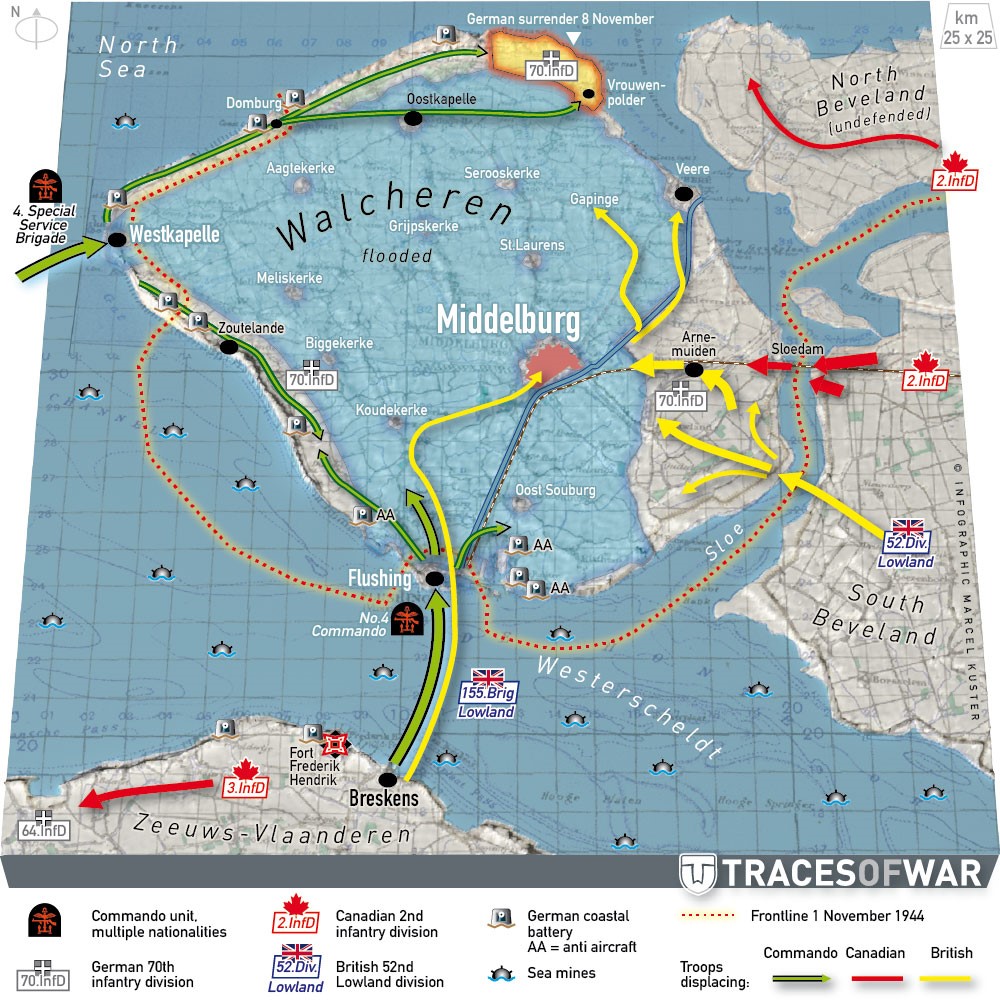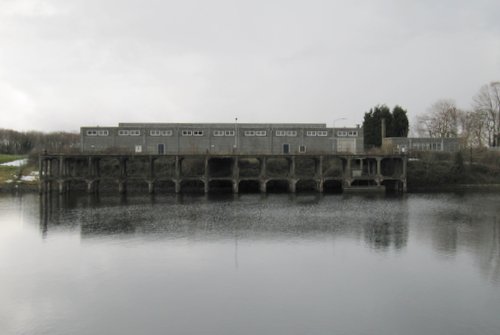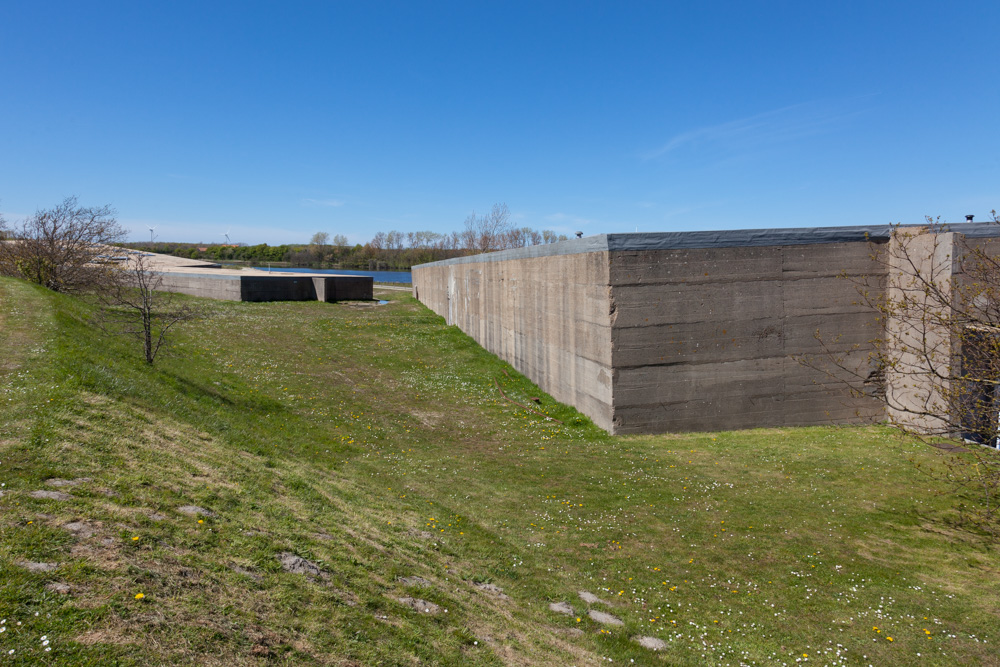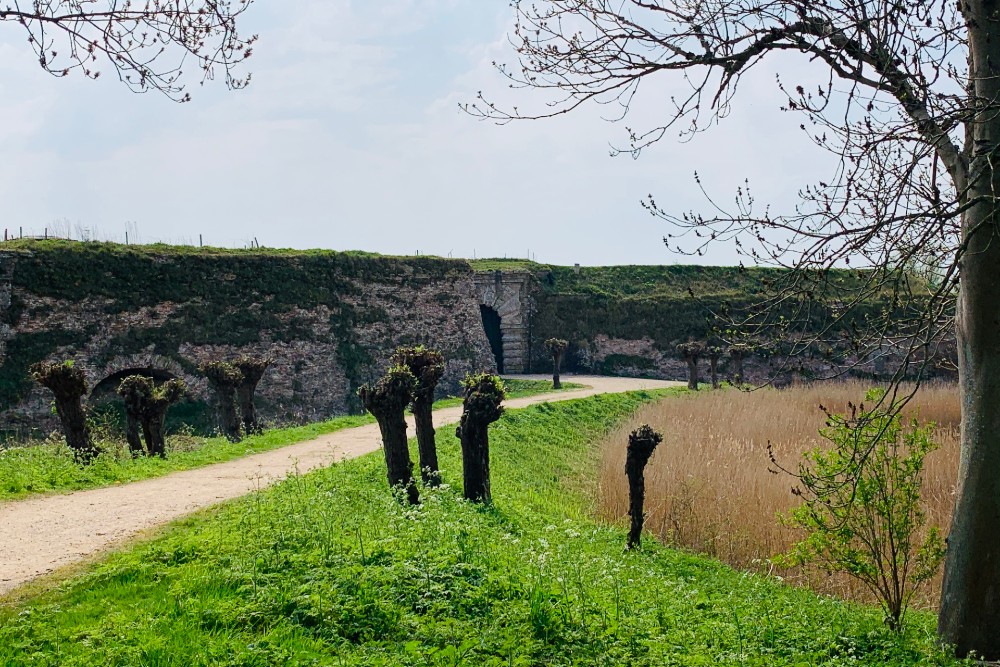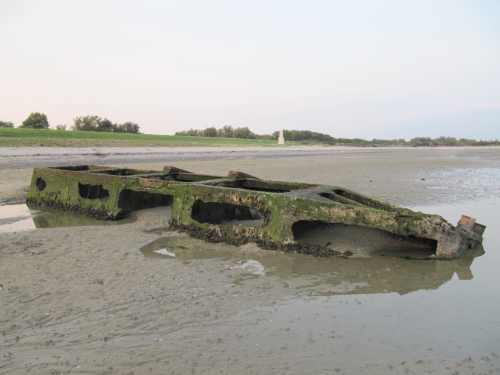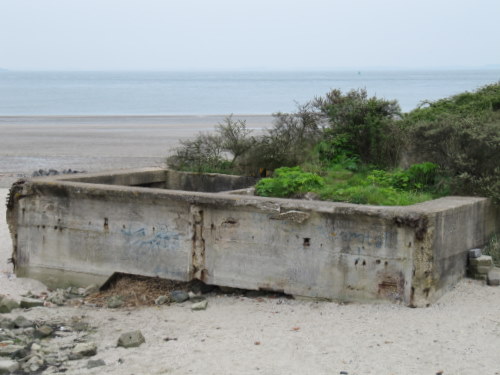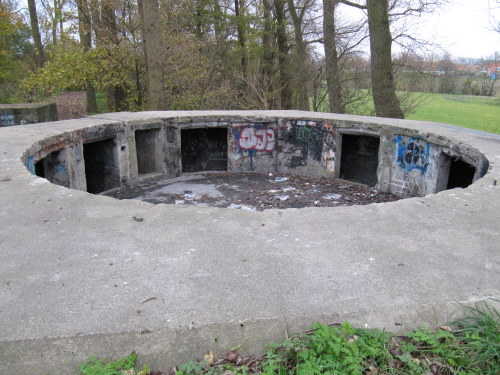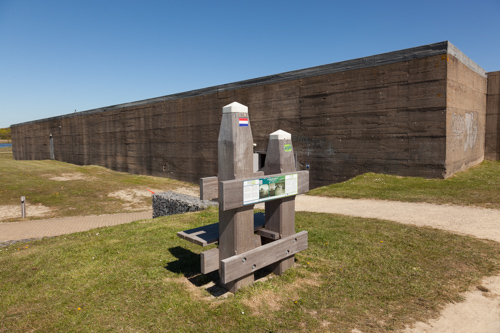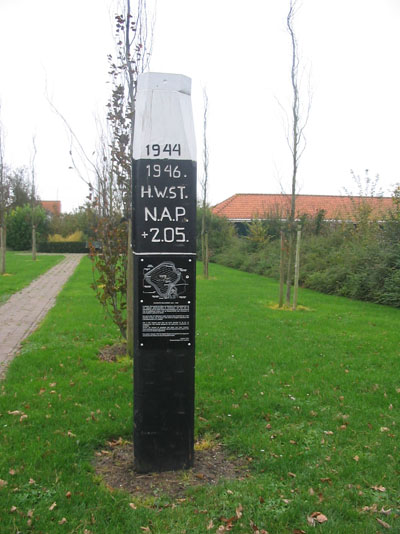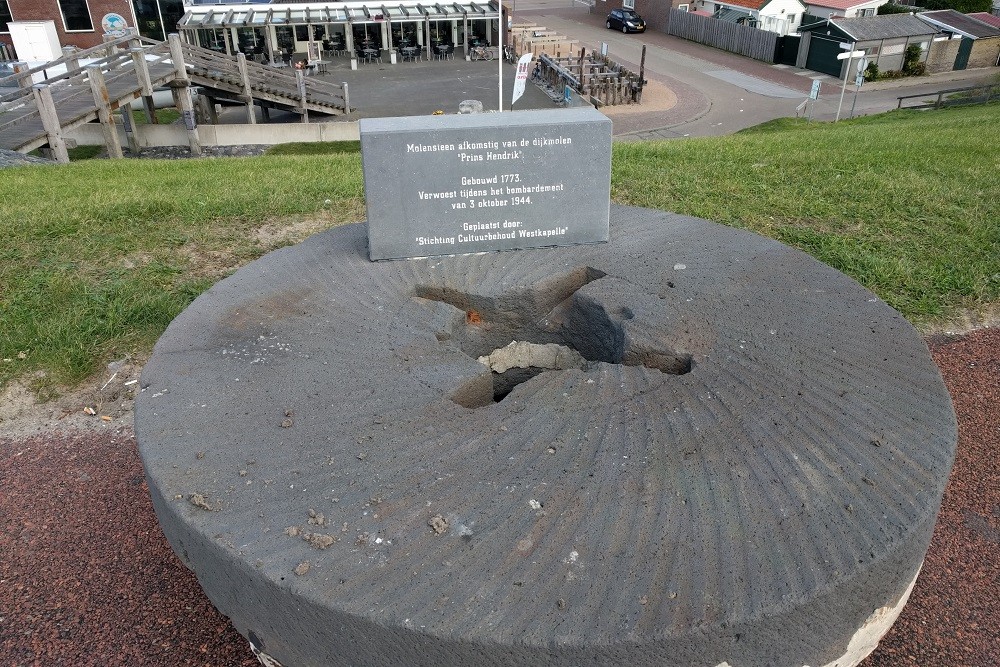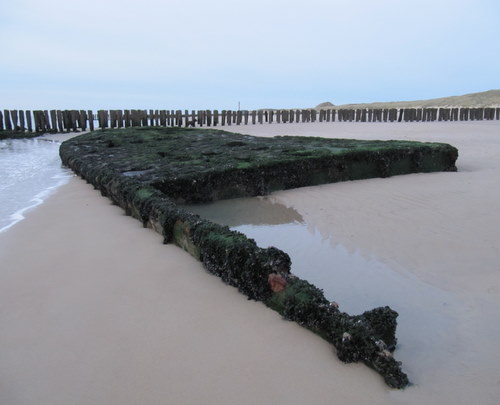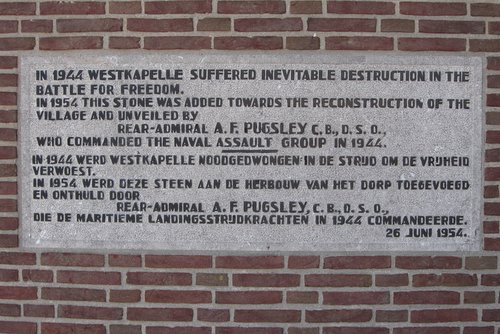Introduction
In October 1944, the dykes on Walcheren were breached in four places by aerial bombings in support of Operation Infatuate, the liberation of Walcheren. The intention was to impede the German defense and to render a considerable part of the German defenses on the island inoperable.
Fortress Walcheren
The Germans soon found out that Walcheren was a strategic area from which the passage to the large port of Antwerp could be protected or sealed off. In addition, the island itself was completely surrounded by water with only a narrow dyke in the east connecting it to the mainland.
In the course of the years, the Germans had turned Walcheren into a fortress with various positions of coastal batteries, more batteries inland and in the dunes and various defensive positions and lines. The port city of Flushing had been turned into a true defensive position, the Verteidigunsbereich Vlissingen with anti-tank moats and walls, dragon's teeth and lots of bunkers.
In order to disable a large part of the German defenses, the Allies eventually took the decision to bomb the inland fortifications and the line of dunes. It was hoped that at the same time, breaches could be made in the dykes, making the fortifications useless for the Germans. Although RAF Bomber Command was hesitant about the results to be achieved[1], on October 1, 1944, SHAEF approved the inundation of Walcheren. A telling detail is that the Dutch government in exile was not even noticed of this beforehand. In the end, they just received a short message.
Definitielijst
- Bomber Command
- RAF unit which controlled strategic and sometimes tactical bombing (as in Normandy)
- inundation
- “Latin: No bottom”. The deliberate flooding of land with the aim of stopping or hindering the advance of the enemy into a certain area.
- RAF
- Royal Air Force. British air force
- SHAEF
- Supreme Headquarters Allied Expeditionary Force, the Allied High Command in Western-Europe after the Normandy landings.
Westkapelle, October 3, 1944
On October 3, 1944, starting at 12:45, the RAF bombed the first dyke near Westkapelle at jump tide and managed to breach it[2]. The attack was launched by No. 8 Pathfinder Group and Nos 1, 3 and 5 Bomber Group[3]. A fleet of 243 Avro Lancaster bombers and 4 DeHavilland Mosquitos dropped a large number of bombs[4] on the dyke south of the village of Westkapelle. In total, 237 bombs of 4,000 lbs., 1,742 bombs of 1,000 lbs., 278 bombs of 500 lbs. and 60 markers of 250 lbs. were dropped. The bombers were escorted by no less than four Spitfire squadrons[5]. The raid lasted until 15:02. The attack claimed the lives of 152 civilians[6]. In the mill De Roos of the Theunissen family near the breach in the dyke alone, 47 people died who had taken shelter in the cellar of the mill.
In the end, the tide caused the initial breach of 70 yards to widen to no less than 350[7]. It did prove insufficient though to inundate the entire island with just this one breach and therefore it was decided to bomb dykes in three other locations[8].
The following squadrons participated in this attack:
| No. 11 Group |
||
| No. 63 Squadron No. 64 Squadron No. 126 Squadron No. 310 (Czech) Squadron |
12 Supermarine Spitfire 11 Supermarine Spitfire 11 Supermarine Spitfire 12 Supermarine Spitfire |
|
| No. 8 (Pathfinder)
Group |
||
| No. 105 Squadron No. 109 Squadron No. 582 Squadron |
2 DeHavilland Mosquito 3 DeHavilland Mosquito 4 Avro Lancaster |
|
| No. 3 Group, 1st Wave |
||
| No. 622 Squadron No. 15 Squadron No. 90 Squadron |
12 Avro Lancaster 11 Avro Lancaster 7 Avro Lancaster |
|
| No. 3 Group, 2nd Wave |
||
| No. 514 Squadron No. 75 Squadron No. 115 Squadron |
10 Avro Lancaster 10 Avro Lancaster 10 Avro Lancaster |
|
| No. 3 Group, 3rd Wave |
||
| No. 90 Squadron No. 218 Squadron No. 149 Squadron |
10 Avro Lancaster 10 Avro Lancaster 10 Avro Lancaster |
|
| No. 3 Group, 4th Wave |
||
| No. 514 Squadron No. 75 Squadron No. 115 Squadron |
9 Avro Lancaster 11 Avro Lancaster 10 Avro Lancaster |
|
| No. 1 Group, 5th Wave |
||
| No. 625 Squadron No. 460 Squadron No. 100 Squadron |
12 Avro Lancaster 12 Avro Lancaster 6 Avro Lancaster |
|
| No. 1 Group, 6th Wave |
||
| No. 103 Squadron No. 166 Squadron |
13 Avro Lancaster 17 Avro Lancaster |
|
| No. 1 Group, 7th Wave |
||
| No. 550 Squadron No. 576 Squadron |
17 Avro Lancaster 13 Avro Lancaster |
|
| No. 1 Group, 8th Wave |
||
| No. 12 Squadron No. 300 (P) Squadron No. 626 Squadron No. 101 Squadron |
9 Avro Lancaster 5 Avro Lancaster 9 Avro Lancaster 7 Avro Lancaster |
|
| No. 5 Group, 9th wave |
||
| No. 617 Squadron |
8 Avro Lancaster 2 DeHavilland Mosquito |
|
Definitielijst
- RAF
- Royal Air Force. British air force
- raid
- Fast military raid in enemy territory
- Squadron
- A military unit in the Belgian navy usually six to eight small ships operating together under one command. The smallest military unit in the Dutch air force of about 350 men. In most countries is the designation of a military unit thesize of a company. It is either an independent unit, such as a battery, or part of a bigger Calvary unit. In the air force it is the designation of a unit of aircrafts.
Flushing, October 7, 1944
The Nolledijk west of Flushing and the section of the dyke near Ritthem east of town were breached during the next attack[9].
Nolledijk west of town was attacked by 58 Lancasters of No. 5 Bomber Group which dropped 348 tons of bombs on the dyke[10]. The raid was carried out in daylight and was very effective. A breach of 250 yards wide was made. Within a few days, there was three feet of water in downtown Flushing; in June, the breach had grown to 350 yards wide[11].
The other dyke, east of town near Ritthem was attacked by 63 Lancasters dropping 384 bombs[12]. The entire breach was no less than 700 yards wide and increased to 750 in June 1945[13].
The following squadrons participated in this attack:| Dijkgat De Nolle |
|
| No. 9 Squadron, 1st Wave |
16 Avro Lancaster |
| No. 467 Squadron, 2nd Wave |
12 Avro Lancaster |
| No. 463 Squadron, 3rd Wave |
11 Avro Lancaster |
| No. 61 Squadron, 4th Wave |
12 Avro Lancaster |
| No. 50 Squadron, 5th wave |
12 Avro Lancaster |
| Dijkgat Ritthem |
|
| No. 613 Squadron, 1st Wave |
16 Avro Lancaster |
| No. 44 Squadron, 2nd Wave |
14 Avro Lancaster |
| No. 57 Squadron, 3rd Wave |
16 Avro Lancaster |
| No. 207 Squadron, 4th Wave |
16 Avro Lancaster |
Definitielijst
- raid
- Fast military raid in enemy territory
- Squadron
- A military unit in the Belgian navy usually six to eight small ships operating together under one command. The smallest military unit in the Dutch air force of about 350 men. In most countries is the designation of a military unit thesize of a company. It is either an independent unit, such as a battery, or part of a bigger Calvary unit. In the air force it is the designation of a unit of aircrafts.
Veere, October 11, 1944
The fourth dyke was breached by bombing on October 11, 1944 near Veere[14]. An armada of 60 Lancasters of No. 5 Bomber Group[15] unleashed 374 tons of bombs on the Oostwatering northwest of Veere[16]. A breach of 650 yards wide was made which had increased to 975 yards in June 1945[17].
Bombers of No. 5 Bomber Group, including 15 Lancasters of No. 613 Squadron carried out this raid.
Definitielijst
- raid
- Fast military raid in enemy territory
- Squadron
- A military unit in the Belgian navy usually six to eight small ships operating together under one command. The smallest military unit in the Dutch air force of about 350 men. In most countries is the designation of a military unit thesize of a company. It is either an independent unit, such as a battery, or part of a bigger Calvary unit. In the air force it is the designation of a unit of aircrafts.
Consequences
The bombings resulted in the major part of the island being inundated. The number of victims among the population wasn't that bad as on October 2, leaflets had been dropped over Walcheren announcing the bombings. Near Westkapelle, the raid claimed the most victims, 152 as the breach was close to the village.
The consequences for the German fighting power were considerable. The German troops were pinned down on their locations and it was difficult to relocate them. Quick displacement during an attack was out of the question. In fact, the island was split in three parts, a narrow line of dunes in the northwest, the area in and directly around Flushing and the higher ground in the east. As the additional defenses in the interior were flooded, there was hardly any question of connection between the German positions except for radiocommunication and telephone. As to defense, they all were left to their own devices. The coastal batteries however had hardly been damaged by the bombings.
On October 17, 1944, Westkapelle was bombed again in an attempt to widen the breach and disable the German gun positions. The area was first marked by Pathfinders and these were followed by 3 waves of 47 Lancasters that dropped 652 bombs of 200 lbs and 4 markers of 200 lbs.
Towards the end of October, an attempt was made to knock out these coastel batteries in a bombardment lasting three days. In 649 sorties, 3,271 tons[18] of bombs were dropped but with little effect though. The last large raid took place on October 24 on the locks near Flushing[19]. On November 1, 1944, during the landings at Westkapelle and Flushing these batteries would fully contribute to the defense.
After the war and assisted by the Allies, the breaches were closed, using the caissons that had been intended for the Mulberry harbors in Normandy. Near Westkapelle, the breach was closed on October 12, 1945. Near Flushing, the breach in the Nolledijk was closed on September 3, 1945 but the dyke broke again on September 25. On October 2, 1945, the breach was finally closed. The other breach near Flushing at Ritthem caused more problems. A first attermpt at closing it was made on December 1, 1945 but it failed. As late as February 5, 1946, the breach was definitely closed, The last breach, near Veere, was closed on October 23, 1945[20].
Notes
- Brooks, 2011, p 25
- Brooks, 2011, p 8
- Rawson, 2020, p 28
- Brooks, 2011, p 27
- Walcheren 40-45
- Zeeuws Archief
- Brooks, 2011, p 27
- Swiers, 2019, p 85
- Brooks, 2011, p 8
- Brooks, 2011, p 27
- Zeeuws Archief
- Brooks, 2011, p 27
- Zeeuws Archief
- Brooks, 2011, p 8
- Rawson, 2020, p 31
- Brooks, 2011, p 27
- Zeeuws Archief
- Brooks, 2011, p 28
- Zeeuws Archief
- Zeeuws Archief
Definitielijst
- raid
- Fast military raid in enemy territory
Information
- Article by:
- Wilco Vermeer
- Translated by:
- Arnold Palthe
- Published on:
- 22-06-2023
- Last edit on:
- 30-09-2024
- Feedback?
- Send it!
